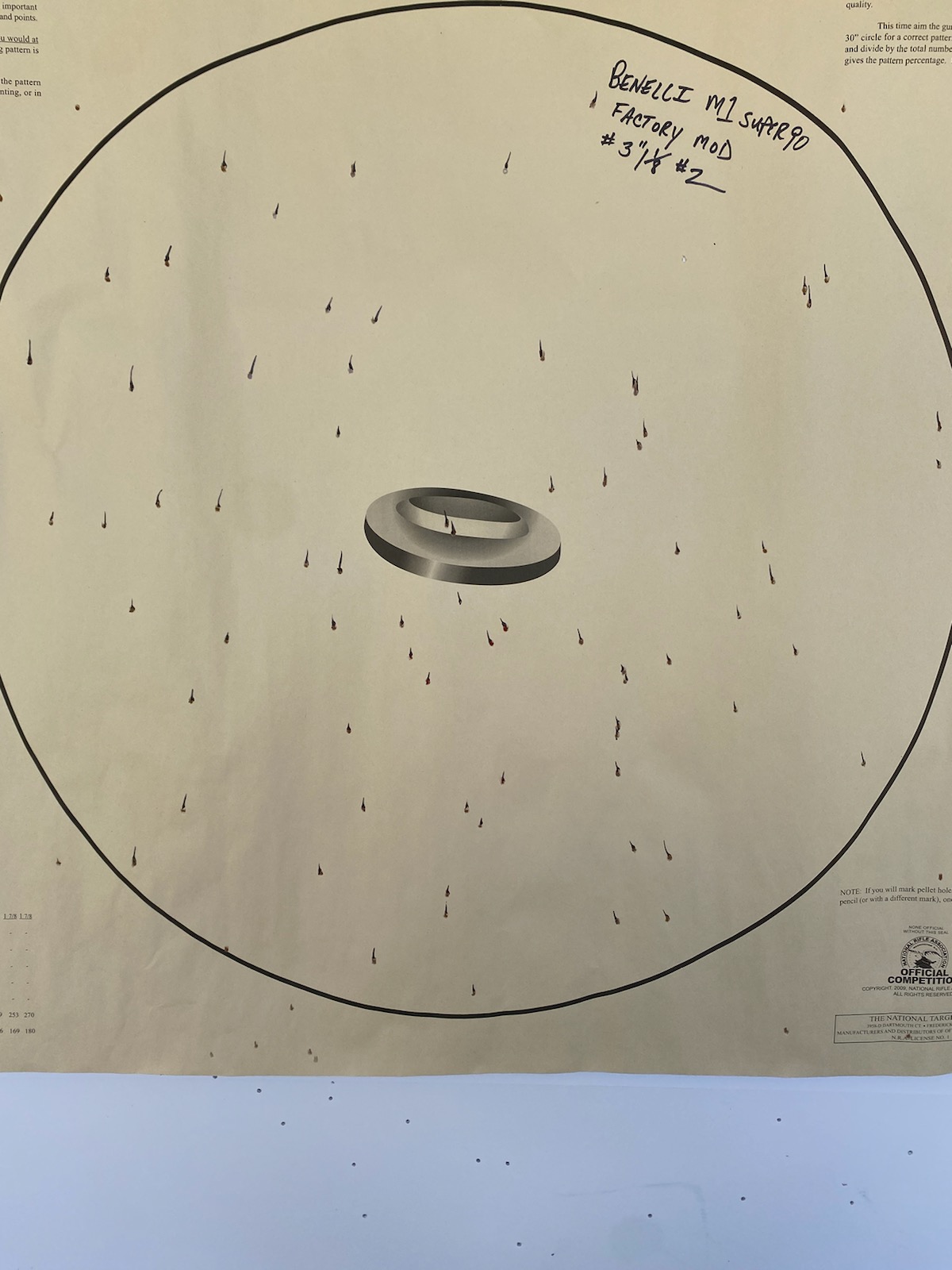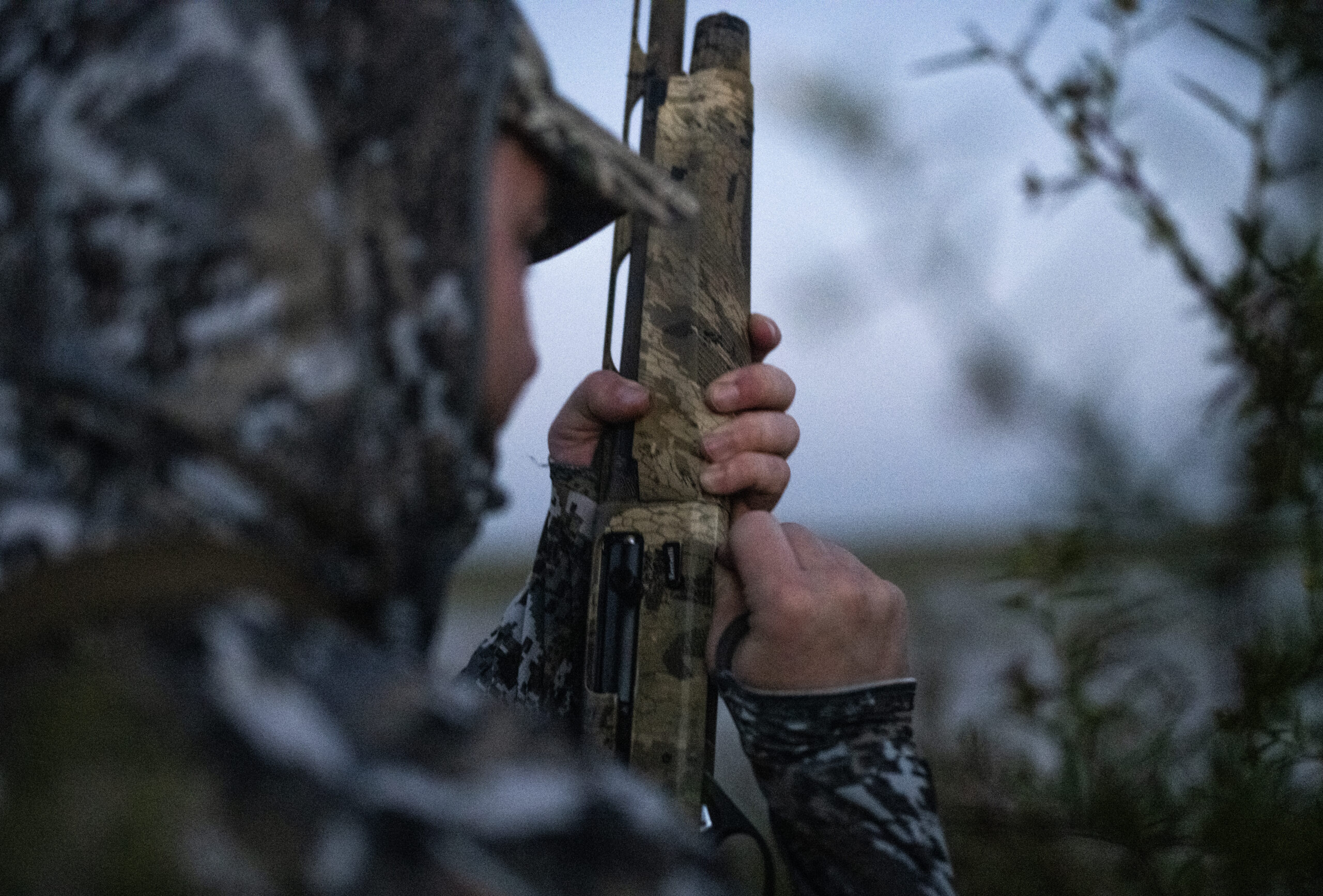We may earn revenue from the products available on this page and participate in affiliate programs. Learn More ›
If you’re an old waterfowl hunting junkie like me, then the Benelli M1 Super 90 is likely on your short list of guns to own. I have wanted a 3-inch Super 90 auto-loader ever since my days as a snow goose guide on the Texas coastal prairie in the 1990s. Benelli’s Super Black Eagle is far more popular among today’s duck hunters, but I’m a vintage gun guy. I love shotguns made of walnut and steel, and don’t much pay attention to what’s trendy, though the SBE is clearly a great inertia semi-auto and not just a fad.
I didn’t buy an M1 when they were new and widely available. I had other guns to buy, I guess, and figured the M1 was such a great auto it would enjoy a run similar to John Browning’s Auto-5 and that I would have plenty of time to acquire one. I was wrong. It was discontinued in 2005.
A few years ago, I was near my old snow goose stomping grounds in El Campo, walked into a gun shop in search of 16-gauge ammo, and there they were: two M1s sitting side-by-side on the rack. My buddy Richard Foley saw them first and laid claim to the synthetic M1, and I gladly forked over $700 for the wood-stocked 12-gauge with a 26-inch barrel.

A Quick Benelli History
Benelli shotguns have garnered a well-deserved reputation for reliability and high-quality, especially with duck hunters. Walk into any blind across the four flyways and there is likely to be a Benelli in it.
Benelli Armi was formed in 1967 by the Benelli brothers who built their Italian manufacturing reputations on motorcycles. The brothers were convinced that the future of shotguns lay in semi-auto designs (smart guess), and they desired to take it another step forward with a revolutionary design. The first model offered was the 121 M1, a tactical shotgun with wood furniture.
German firm Heckler and Koch decided it wanted a piece of the American shotgun market. They had produced high quality rifles and handguns and the next logical step was shotguns. But they didn’t want to go through the time and expense of designing one themselves. So, they began importing Benellis to the U.S. in the 1980s and 90s. Today, Benelli USA imports the guns. Stoeger, Franchi, Chapius, and Uberti all fall under the Benelli banner, and Beretta is the parent company, overseeing all of them.
Benelli M1 Super 90 Specifications
- Gauge: 20 and 12
- Action: Semi-auto (inertia-driven)
- Capacity: 4+1
- Chamber: 3-inch
- Barrel: Steel, stepped, ventilated rib
- Barrel length: 18, 24, 26, 28, or 30 inches
- Chokes: Skeet, IC, M, IM, and F
- Weight: 7.2 pounds (12-gauge)
- Price: $700-$1,000
Why I Still Shoot the M1
When I found that M1 in Texas, it immediately became my go-to shotgun. I took it out for early-season teal the next morning and it performed flawlessly. The M1 has since accompanied me on hunts in Kansas, Missouri, Tennessee, Arkansas, Mississippi, and back to Texas. It has never jammed with any shell I’ve fed it. I love the M1 because I can count on it, which makes the Benelli a joy to shoot. One thing I did to make my Super 90 easier on the shoulder was replacing the old factory recoil pad (they were never soft) with the Limbsaver AirTech pad.

How the Benelli M1 Super 90 Operates
Italian Engineer Bruno Civolani is credited with the inertia-driven system Benelli shotguns operate on. His revolutionary, short recoil platform relies on a two-part bolt assembly with rotating bolt head, and a heavy spring between the rotating head and bolt carrier. Initial recoil compresses that spring while the rotating head tightens into the barrel locking lugs.
At that point, the heavy spring presses forward and unlocks the bolt head, sending the entire assembly rearward. That motion extracts the shell, cocks the firing pin, and pulls a fresh round from the magazine into the chamber. It’s a very fast process, but also simple, and clean. The recoil spring of a Benelli can be found in the stock, which means there is less bulk in the fore-end and why they are so much more slender than a gas gun that uses a piston that slides over or is housed at the end of the magazine tube. Inertia guns also don’t have the number of components a gas-operated gun does, so they are inherently lighter.
A lot of weight savings also comes from Benelli’s anodized aluminum receiver. Aluminum is quite strong and corrosion resistant. It’s a solid material choice that had been in use prior to Benelli’s entrance into the shotgun market. The bolt lock-up is steel-to-steel with the barrel extension surrounding the rotary bolt head.
Disassembly for cleaning is quick and easy. Unscrew the fore-end nut to release the barrel and pull the barrel and fore-end off together. Remove the bolt handle, and the bolt comes out as a single unit. Tap out the trigger assembly pins with a hammer and hole punch to drop out the trigger group, and the gun is ready for cleaning.
Five flush-fitting chokes came with the M1: skeet, improved cylinder, modified, improved modified, and full.
How the Benelli M1 Super 90 Patterns
When I bought this gun, it only came with a modified choke. I had only patterned it with the aftermarket choke I use to duck hunt with, so I tracked down factory improved cylinder and full chokes to see how the gun shot through all three chokes at 40 yards inside a 30-inch circle. I patterned the gun using 3-inch Winchester Xpert No. 2s with a 1 1/8-ounce charge weight and 1,550 fps muzzle velocity.



The improved cylinder choke delivered a 50 percent pattern (70 of 141 pellets), modified was 72 percent (100 of 141), and full was 84 percent (113 of 141). The full choke pattern results were eye-opening. When steel began to replace lead (I hunted with steel in the first non-toxic zone in the U.S. southeast of Houston, Texas) in the early 1980s much of the testing showed that IC chokes delivered modified patterns and modified delivered full choke patterns. The factory full pattern was slightly better than the ones I’ve seen from my aftermarket choke, a Jeb’s Mid-Range with a constriction of .695, which makes sense because full choke diameter for a Benelli is .686. Note that steel is not meant to be shot through full chokes because it can damage barrels. I have found that you can get away with shooting smaller steel shot sizes through full chokes. However, it’s not recommended by any shotgun manufacturer, so if you’re dead set on shooting a full choke, use bismuth, which in some cases is very close in price to steel shot, and slightly denser.
M1 Super 90 Variations
Benelli has always done a fine job of offering multiple options in their shotgun lineups and the M1 Super 90 is no exception. They built the M1 in 12- and 20-gauge with 24-, 26-, 28-, and 30-inch barrel lengths as well as a tactical model with an 18-inch barrel. There is also a deer slug barrel for whitetail hunters. The guns were offered in camo finishes as well as black synthetic, and wood-stocked variants.
One negative of the M1 is the barrel finish on the black synthetic model is not as durable as the bullet-proof finish on the receiver. The receiver is extremely resistant to scratches and corrosion. But the barrel develops surface rust and scratches easily. I had my gun barrel Teflon coated, eliminating those issues. Cerakote is a popular finish as well.
Read Next: Shotgun Review: Benelli’s M2 Waterfowl Performance Shop Is Custom Built For Duck Hunters

The M2 Is a Good Second Option
If you can’t find a Super 90, the M2 is still in production and has the exact same internal operating system as the M1. Benelli added some features to the M2, like the ComforTech stock, which has interlocking synthetic chevrons to dampen recoil. The M2 also has Crio chokes, a softer recoil pad, and more exterior finish options, though you cannot get it with a wood stock and fore-end. Benelli offers the M2 in 20- and 12-gauge as well with 26- or 28-inch barrel options.


















